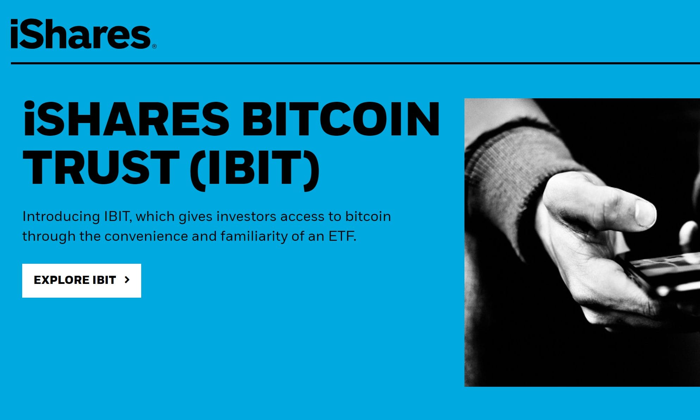Bitcoin balance sheet adoption is on track to become a cornerstone of institutional finance, potentially reaching 20% of the total BTC supply by 2026. According to a recent report by Bitwise and UTXO Management, significant players like nation-states and wealth management firms may redirect substantial assets into Bitcoin, indicating a shift toward mainstream acceptance. The phenomenon is largely influenced by trends in Bitcoin institutional adoption, where companies are recognizing Bitcoin as a viable treasury management solution. With the rise of Bitcoin ETFs and favorable regulatory policies, fears of hyperbitcoinization are transforming from speculative chatter into tangible investment strategies. As corporate treasuries transform their financial strategies, Bitcoin’s role in modern finance is poised for explosive growth, highlighting a pivotal moment in digital asset evolution.
The evolving landscape of Bitcoin’s financial integration reflects a broader shift in how organizations consider cryptocurrency within their fiscal strategies. This trend, often referred to as corporate treasury adoption, sees more entities exploring the benefits of allocating portions of their assets to Bitcoin. As institutional participants become increasingly comfortable with incorporating crypto into their balance sheets, market dynamics are changing significantly. The rise of Bitcoin exchange-traded funds (ETFs) and supportive legislation creates an environment ripe for transformative investments. Collectively, these developments paint a compelling picture of a future where Bitcoin is not just an asset but an integral element of corporate finance.
The Future of Bitcoin Balance Sheet Adoption
Bitcoin balance sheet adoption is poised to revolutionize the way institutions and corporations manage their financial assets. According to recent projections by Bitwise and UTXO Management, it is anticipated that up to 20% of Bitcoin’s total supply could migrate to institutional balance sheets by the end of 2026. This significant shift will likely be fueled by a growing recognition of Bitcoin as a legitimate asset class, along with its potential to serve as a hedge against market volatility. As traditional investment firms increasingly embrace digital currencies, the implications for Bitcoin’s price stability and mainstream acceptance are profound.
The institutionalization of Bitcoin represents more than mere speculation; it suggests a foundational transformation of financial systems. With investments pouring into Bitcoin exchange-traded funds (ETFs) and corporate treasury management strategies evolving to include substantial Bitcoin holdings, the landscape of institutional finance is set for transformative change. As major corporations and sovereign wealth funds begin incorporating Bitcoin into their portfolios, the demand for Bitcoin will ripple through the market, creating a feedback loop that reinforces its value and utility. By capitalizing on the potential power of Bitcoin as a treasury asset, institutions position themselves well for the economic landscape of the future.
Impact of Bitcoin ETFs on Institutional Adoption
The rise of Bitcoin ETFs has been pivotal in driving institutional adoption of Bitcoin as a viable asset class. With a remarkable inflow of $36.2 billion in the first year, Bitcoin ETFs have attracted considerable interest from wealth-management firms looking to diversify their portfolios. The speed at which these funds gained traction, surpassing gold ETF assets in a fraction of the time, has proven that investors are ready for innovative financial solutions that include digital currencies. This phenomenon not only showcases institutional interest but also lays the groundwork for widespread acceptance of Bitcoin as part of fiduciary and treasury management practices across various sectors.
As larger institutions begin to embrace Bitcoin through ETF investments, we expect a cascading effect where trust and interest will perpetuate further adoption. ETFs allow for simpler access to cryptocurrency markets without the complexities of directly managing BTC. This accessibility can attract more conservative investors who may have initially hesitated to enter the crypto space. The anticipated shift towards yield-generating Bitcoin practices, such as on-chain lending and stake-saving utilities, could further accelerate institutional investment, pushing the Bitcoin treasury management narrative to a front-row position in corporate finance.
The Role of Policy in Bitcoin Adoption
Favorable policies are critical in shaping the future of Bitcoin adoption among institutions. Recent legislative movements, including the reintroduction of the BITCOIN Act by Senator Lummis, aim to create structural demand for Bitcoin as the U.S. Treasury is directed to acquire 200,000 BTC annually. Such government actions bolster confidence in Bitcoin, suggesting a long-term commitment to its potential within the financial ecosystem. As asset management strategies adapt to include more Bitcoin, these policies will not only support price stability but could transform Bitcoin into a cornerstone of state-level financial strategies.
Moreover, state-level initiatives that promote Bitcoin as a strategic reserve asset illustrate a growing recognition of its role in public finance and economic stability. By capping Bitcoin allocations in rainy-day funds, states are signaling a commitment to leverage Bitcoin’s potential, creating a game-theoretical dynamic that pressures lagging entities to adopt similar strategies. Such policies add legitimacy to Bitcoin, reinforcing its status as a critical financial asset. As correlation between policy initiatives and market performance solidifies, we can anticipate an uptick in Bitcoin balance sheet adoption as institutions respond to regulatory frameworks that favor digital currencies.
Hyperbitcoinization: The Next Financial Revolution
Hyperbitcoinization refers to a theoretical scenario where Bitcoin becomes the dominant global currency, fundamentally transforming the way we perceive and interact with money. The idea is gaining traction among economists and investors alike, fueled by the increasing institutional adoption of Bitcoin. The report by Bitwise and UTXO Management emphasizes that this evolution is not merely speculative but is influenced by balance sheet strategies of corporations and nations that recognize Bitcoin’s unique properties as a store of value. As more entities recognize Bitcoin’s potential, the shift toward hyperbitcoinization may become inevitable.
The transition towards hyperbitcoinization also hinges on increasing public acceptance and the reduction of regulatory barriers. As Bitcoin becomes integrated into the fabric of financial management for institutions, it will also pave the way for future innovations within the cryptocurrency space. This convergence could lead to advances in financial technology, smart contracts, and decentralized finance (DeFi). Ultimately, hyperbitcoinization represents a significant shift in economic governance, underscoring the necessity for institutions to engage with Bitcoin, not just as a speculative asset but as an integral part of their financial strategy.
The Dynamics of Bitcoin Supply by 2026
Forecasts indicate that by 2026, a substantial portion of Bitcoin’s supply will be managed by institutions, potentially reaching 20% or approximately 4.27 million BTC. This shift suggests a revolution in the market dynamics surrounding Bitcoin as it gains traction as a mainstream asset class. Institutions, particularly wealth management platforms, could dominate demand channels by using Bitcoin as a hedging asset and a medium for treasury management, creating a robust environment for price appreciation and stability.
As supply constricts due to institutional acquisitions and the accumulative effect of Bitcoin’s capped supply reaches a broader audience, the demand dynamics will shift dramatically. The increasingly attractive proposition for investors is that Bitcoin not only serves as an alternative asset but also offers potential returns by acting as a deflationary currency. The evolution of BTC supply strategies among public companies and institutional investors symbolizes the maturation of the asset, showcasing its journey from a speculative investment to an essential component of modern financial management.
Bitcoin Treasury Management Strategies
Bitcoin treasury management is emerging as a critical strategy for companies looking to diversify their assets and hedge against inflation. As public companies collectively hold substantial amounts of Bitcoin, such as the identified 600,000 BTC, more firms are likely to adopt Bitcoin as a core part of their treasury strategy. Fair-value accounting rules and competitive pressures from industry peers are pushing companies to recognize the benefits of holding Bitcoin, further embedding it in corporate financial practices.
Additionally, as firms engage in more nuanced Bitcoin treasury management practices, such as investing in Bitcoin-backed loans or generating yield from BTC holdings, the financial landscape will adapt accordingly. Sophisticated financial products around Bitcoin will evolve, allowing companies to better manage liquidity while leveraging their cryptocurrency assets. This proactive approach to Bitcoin treasury management not only provides a safety net against economic disruptions but also positions these firms as leaders in the digital asset revolution.
Bitcoin’s Value Proposition for Institutional Investors
As institutional interest in Bitcoin grows, its value proposition becomes increasingly clear. Not only does Bitcoin offer a decentralized and secure method of transferring value, but it also serves as a hedge against traditional market risks. Investors are now more aware of Bitcoin’s unique advantage as a deflationary asset, making it an appealing alternative for risk diversification in an ever-volatile economic environment. With projections suggesting that 20% of Bitcoin will be institutionalized by 2026, the demand dynamics are expected to shift, unlocking more use cases and applications for Bitcoin.
Furthermore, Bitcoin offers advantages that traditional assets lack, such as transparency, portability, and ease of transferability. These characteristics, combined with the macroeconomic trends of inflation and currency devaluation, solidify Bitcoin’s position as a superior option for long-term investment strategies. Institutional investors can tap into these advantages by incorporating Bitcoin into their portfolios, thus reaping the rewards of an asset poised for sustained growth as it transitions into mainstream finance.
Navigating Regulatory Challenges for Bitcoin Adoption
Navigating the regulatory landscape is crucial for the broader adoption of Bitcoin, especially among institutional investors. As governments worldwide establish clearer frameworks surrounding cryptocurrencies, institutions worldwide are gaining more confidence in Bitcoin as a long-term investment. However, inconsistent regulations across jurisdictions still pose challenges. Institutions must stay informed and adapt their strategies accordingly to maintain compliance and capitalize on the opportunities presented by Bitcoin.
The increasing focus on Bitcoin regulations also indicates a shift toward recognition of the cryptocurrency as a legitimate financial asset. With regulators beginning to understand the complexities and potential benefits of Bitcoin, there may be a drive to create standardized frameworks that facilitate institutional engagement. This evolving relationship highlights the importance of collaboration between the crypto industry and regulatory bodies, leading to a more structured adoption of Bitcoin and minimizing the barriers posed by regulatory uncertainty.
The Intersection of Economics and Bitcoin Value
As Bitcoin adoption accelerates, its intersection with economics cannot be overlooked. The traditional economic principles of supply and demand are amplified within the Bitcoin ecosystem, where limited supply meets growing institutional demand. This dynamic often leads to increased volatility, but as more institutions enter the market, we can expect a stabilization effect over time. The overall understanding of Bitcoin’s economic properties will be crucial for investors looking to navigate the market’s intricate landscape.
Moreover, the global economic situation plays a significant role in Bitcoin’s value perception. Market conditions, geopolitical tensions, and inflationary pressures can all influence institutional sentiment towards Bitcoin. During times of financial uncertainty, Bitcoin’s reputation as a hedge against traditional market risks will likely enhance its appeal. Thus, the intertwining of Bitcoin with global economic trends will shape its trajectory, impacting not only its value but also its adoption among institutional investors looking to future-proof their asset allocations.
Frequently Asked Questions
What is Bitcoin balance sheet adoption and why is it significant for institutional investors?
Bitcoin balance sheet adoption refers to the trend where institutional investors and corporations incorporate Bitcoin into their financial statements as an asset. This is significant because it suggests a growing acceptance of Bitcoin as a legitimate store of value, potentially leading to increased demand and price stability in the cryptocurrency market.
How could Bitcoin balance sheet adoption affect the BTC supply by 2026?
According to reports, Bitcoin balance sheet adoption could see up to 20% of the total BTC supply transitioning to institutional balance sheets by 2026. This may result from large-scale purchases by public companies, sovereign-wealth funds, and nation-states, driven by optimal treasury management strategies.
What role do Bitcoin ETFs play in driving Bitcoin balance sheet adoption?
Bitcoin ETFs facilitate easy access for institutional investors to enter the Bitcoin market. Their rapid success, with $36.2 billion in net inflows shortly after launch, illustrates significant demand. As more private banks and wealth-management firms offer Bitcoin ETFs, balance sheet adoption is likely to accelerate, integrating Bitcoin into traditional asset portfolios.
What is hyperbitcoinization and how does it relate to Bitcoin balance sheet adoption?
Hyperbitcoinization is the hypothetical scenario where Bitcoin becomes the dominant form of money, thus widely accepted for transactions and as a store of value. Bitcoin balance sheet adoption contributes to this process as more institutions recognize Bitcoin’s significance, making it a core component of their financial management and treasury strategies.
What are the expected outcomes of Bitcoin balance sheet adoption on the overall market by 2026?
Experts project that Bitcoin balance sheet adoption may lead to significant market shifts, including increased Bitcoin prices, enhanced liquidity, and a shift in perception of Bitcoin from speculative asset to a standard financial instrument. This could ultimately increase institutional participation and lay the groundwork for a more stable cryptocurrency market.
Which sectors are leading the charge in Bitcoin balance sheet adoption?
The sectors leading Bitcoin balance sheet adoption include public companies, wealth-management platforms, and government entities. Their increasing allocations of Bitcoin as a treasury management tool highlight the strategic importance of Bitcoin in diversifying and protecting assets.
What impact will US policies have on Bitcoin balance sheet adoption?
Favorable US policies, such as the BITCOIN Act and state-level initiatives, may encourage Bitcoin balance sheet adoption by providing a framework for institutional investors. These policies aim to normalize Bitcoin as a strategic asset, driving further accumulation and investment from public and private sectors.
Can you explain the financial implications of Bitcoin balance sheet adoption for public companies?
Public companies adopting Bitcoin onto their balance sheets can leverage potential price appreciation, create new avenues for treasury management, and improve investor sentiment. By participating in Bitcoin finance mechanisms, they might access new forms of yield and risk management, significantly enhancing their financial positions.
| Key Point | Details |
|---|---|
| Projected BTC Adoption | 20% of all Bitcoin supply could be held by institutional balance sheets by 2026. |
| Major Contributors | Nation-states, wealth-management platforms, public companies, and sovereign-wealth funds are identified as key players. |
| Bitcoin Supply & Allocation | This adoption could amount to approximately 4.27 million BTC, translating to $427 billion in Bitcoin. |
| Policy Influences | Favorable policies, including the BITCOIN Act, are likely to encourage institutional purchases. |
| Market Dynamics | The interplay between institutions and favorable policies could lead to a shift from speculative trading to portfolio management. |
Summary
Bitcoin balance sheet adoption is set to transform the financial landscape significantly by 2026. With projections indicating that 20% of the total Bitcoin supply could be controlled by institutional investors, this paradigm shift highlights the increasing mainstream acceptance of Bitcoin as a legitimate asset class. Key driving forces include the strategic investments by nation-states and large corporations, alongside supportive regulatory frameworks. As institutional participation grows, the dynamics of Bitcoin trading will evolve from mere speculation to a core component of portfolio management, paving the way towards a future where Bitcoin may play a critical role in global finance.
Bitcoin balance sheet adoption is poised to reshape the financial landscape, with projections suggesting that as much as 20% of the total Bitcoin (BTC) supply may be held on institutional balance sheets by 2026. This significant trend in Bitcoin institutional adoption highlights the growing inclination of corporations and wealth-management platforms to include BTC in their treasury management practices. Factors such as favorable regulations, the surge of Bitcoin ETFs, and the potential for hyperbitcoinization are driving this transformation. By reallocating a fraction of their gold reserves and embracing BTC, institutions could unlock an estimated $427 billion in funds, fundamentally changing the dynamics of cryptocurrency investment. As corporations increasingly recognize Bitcoin’s potential as a stable asset, the implications for BTC supply—expected to reach around 21 million—could be profound, influencing market perception and driving future demand.
The emergence of Bitcoin as a core asset for corporate treasury strategies is gaining momentum, with various institutions now considering it as a viable alternative to traditional stores of value like gold. With terms such as cryptocurrency balance sheet utilization and Bitcoin treasury integration becoming commonplace, the shift towards incorporating BTC into fiscal frameworks is evident. As companies aim to optimize their asset portfolios, the prospect of Bitcoin ETFs and related financial products further enhances institutional appeal. Additionally, projections indicating that significant percentages of Bitcoin will be absorbed by wealth-management platforms signal a pivotal moment in portfolio diversification. This broader trend is set against the backdrop of national economic policies that could push Bitcoin closer to mainstream finance, setting the stage for a potential monetary revolution.















